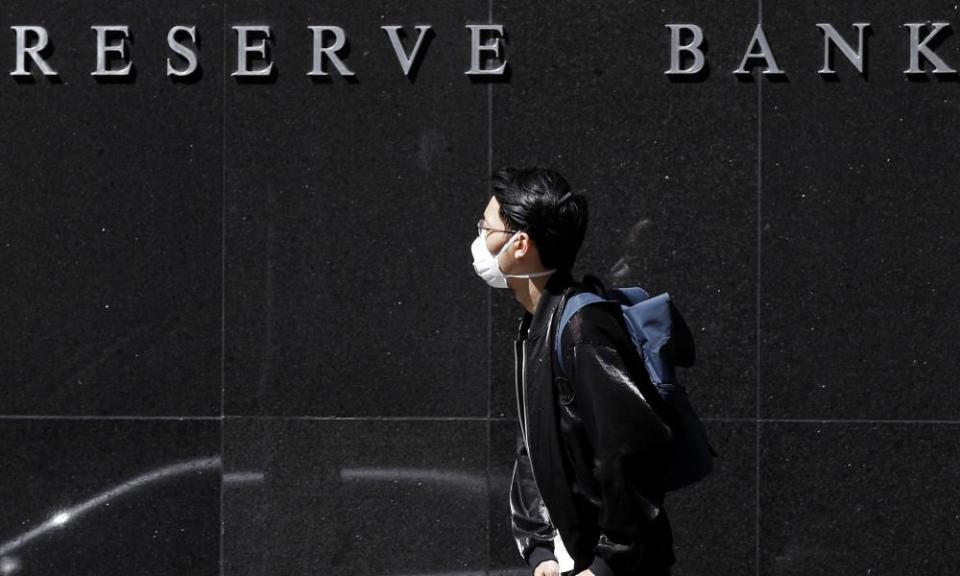Australia will take a long time to recover from this recession. Don't believe otherwise

The latest statement on monetary policy from the Reserve Bank brought the good news that the recession due to the coronavirus should not be as deep as the RBA expected it would be three months ago, but also reinforces just how long the recovery will take.
For those who says there is only gloom, let me say that while in May the RBA predicted Australia economy would shrink 8% in the 12 months to June; now it only expects a 6% fall.
Huzzah!
Yes, we exist in a world where the economy falling by 6% – roughly double the size of the worst fall to have occurred since the second world war – is good news.
Related: Victoria lockdown to push Australia unemployment to 10% and cost national economy up to $12bn
And it also about the only good news to be had.
Because while the RBA predicts the recession will not be as deep, it now expects the recovery to be slower.
In May the RBA noted that “a plausible baseline scenario is that the various restrictions are progressively relaxed in coming months and are mostly removed by the end of September.”
That of course is no longer plausible.
Now the bank suggests “the effects of the heightened activity restrictions in Victoria are likely to offset the pick-up in GDP growth in other parts of the economy in the September quarter”.
The bank also suggests that any job gains in non-Victorian states will be more than cancelled out by the restrictions in Victoria “alongside some job losses occurring as a result of the jobkeeper program beginning to be tapered nationally after September”.
Even within the news suggesting that things are not as bad as hoped is a pretty bleak outlook.
The RBA notes that “it will take a considerable period of time to recover the lost output and employment resulting from the Covid-19 outbreak.”
This is the crucial point.
It is not about just returning to strong growth. We need make up the lost output.
Think of it like running a race in which you are neck and neck with your opponent. If you trip over to regain the lead you don’t just need to get back to the same speed you were previously running, you need to run faster.
The RBA’s latest predictions give us some idea of how long it will take to recover the lost economic ground.
In February the RBA suggested the economy would grow by around 3% each year for the next few years. Given that is decidedly “average” it is a good baseline to use.
The RBA’s latest forecasts are for a 6% fall this year, followed by 5% growth in 2021 and then slowing to 4% growth in 2022.
And yet even if our economy grows faster in 2021 than it has in any year this century we will still be nearly 7% below where we were expected to be before the virus hit.
That in essence means in 2021 (all things going well) Australia will produce around $135bn less than we thought we would. That is a lot fewer businesses operating at full capacity and many fewer people working.
The RBA expects by December 2022 there will again be the same number of people employed as there was at the end of last year.
But by then our adult population will be nearly a million people bigger. That means whereas in December last year 62.6% of those over 15 had a job, in December 2022 the RBA is effectively expecting only 59.8% to be working. That is around the level it was prior to the mining boom in 2002.
So how long will it take to get back level with the size of an economy we were expecting to have before the virus tripped us up?
If the economy keeps growing at 4% each year from 2022 – which is roughly the pace that the economy grew in the recovery from the 1990s recession – then we will be back on par by the end of 2025.
If we grow a bit slower – say 3.5% (still faster than the economy has grown for eight years) – then it will take us till the middle of 2027.
And that assumes constant, solid growth for seven years.
Don’t for a second believe anyone who says this will be anything other than a very long haul.

 Yahoo News
Yahoo News 